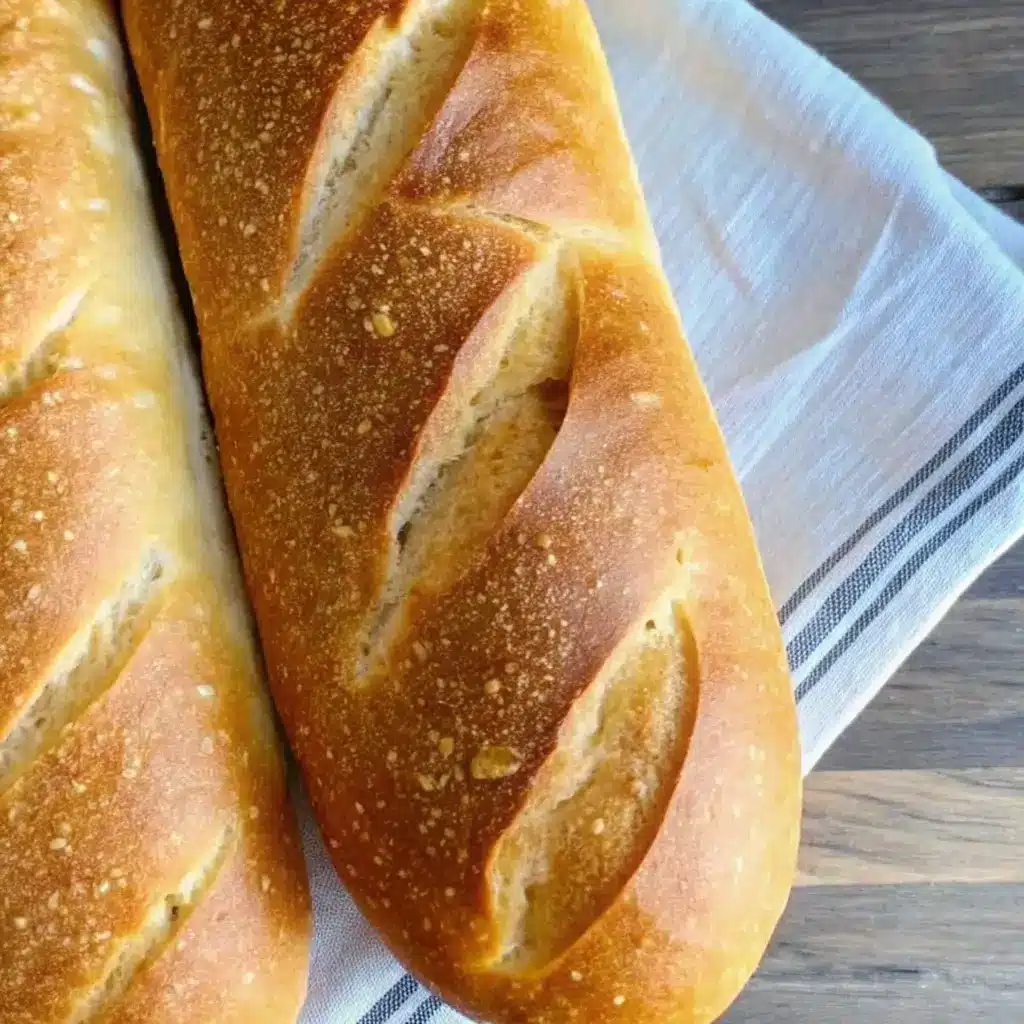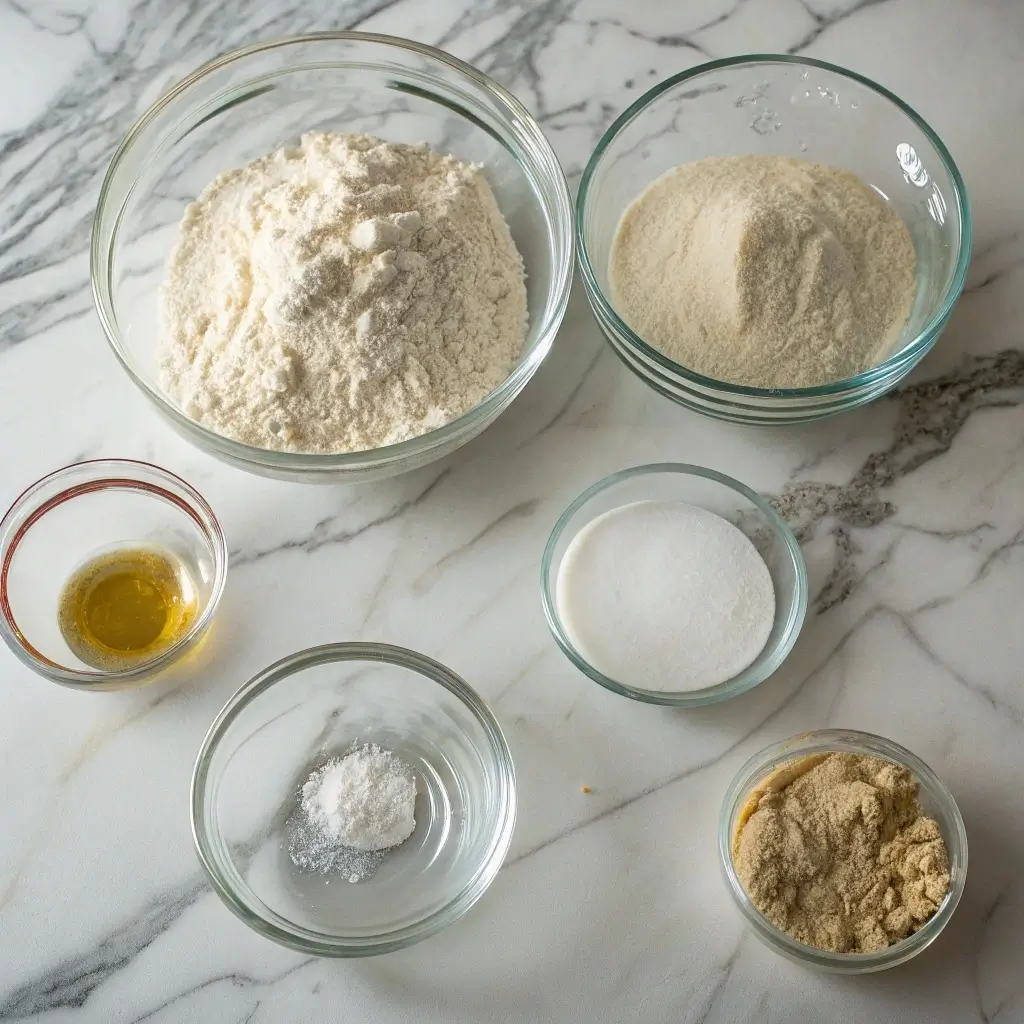Craving something warm, crusty, and full of flavor? Sourdough French bread is the perfect blend of old-world charm and everyday comfort. This artisan-style loaf delivers a crisp, golden crust with a soft, chewy interior and just the right amount of tang. In this article, we’ll explore how to make your own sourdough French bread from scratch, the story behind its creation, and why this bread continues to capture hearts—and stomachs—all over the world. If you love sourdough but dream of the shape and texture of French bread, you’re in for a delightful surprise.
Table of Contents

The Story Behind My Sourdough French Bread Obsession
From Single Mom Scrambles to Sourdough French Bread Success
My journey with sourdough French bread didn’t start with perfection—it started with necessity. Years ago, when I was juggling life as a single mom to two wildly energetic (and very picky) twin boys, meals needed to be fast, filling, and somehow healthy. One rainy afternoon, low on groceries but big on determination, I reached for my bubbly sourdough starter and thought, “Why not French bread?” That bold experiment turned into something unforgettable.
Out came a loaf that was crusty on the outside, tender on the inside, and filled with a rich, tangy flavor I hadn’t expected. The boys tore into it—no complaints, no leftover crumbs. From that night on, sourdough French bread became more than food. It was my go-to comfort bake, my table centerpiece, and a conversation starter at neighborhood potlucks.
Unlike traditional baguettes made with commercial yeast, sourdough French bread uses wild yeast fermentation, which not only enhances flavor but also supports better digestion. It’s heartier, more complex, and feels just a little more special. Over time, it evolved into a ritual. Feed the starter. Shape the dough. Score. Bake. Repeat.
If you’re like me and love exploring different bread styles, organic sourdough bread and croissant sourdough bread are other unique variations that I often switch between. But this sourdough French bread? It’s the one I always return to.
Why Sourdough French Bread Stands Out in Flavor and Function
Let’s talk texture. The crust of sourdough French bread shatters when you bite in, giving way to a moist, structured crumb that’s perfect for slathering with butter, scooping up stews, or building the best sandwiches. The slow fermentation process brings out subtle layers of flavor—tangy, nutty, and rich—that you just can’t get from standard French bread.
Plus, the wild fermentation process naturally lowers gluten and phytic acid, making it easier to digest. For families like mine who are always balancing health and taste, that’s a win-win. When you slice into a fresh loaf and see that gorgeous open crumb, you’ll know your sourdough French bread is not just rustic—it’s downright bakery-worthy.
I often pair this bread with veggie-packed soups on weeknights or with cheese and olives for weekend gatherings. It’s versatile, timeless, and always earns compliments. You can even adapt this dough into sourdough pita bread or explore lighter options like low-calorie sourdough bread if you’re watching your intake.
Sourdough French bread isn’t just a recipe—it’s a practice in patience and flavor-building. Once you bake it, you’ll feel like you’ve unlocked something truly special.
Mastering the Sourdough French Bread Technique
Tools & Ingredients You’ll Need for Sourdough French Bread
Before diving in, let’s gather everything for a successful sourdough French bread bake. This recipe relies on just a handful of pantry basics—but each one matters. You’ll need:
- Active sourdough starter (fed within the last 4–6 hours)
- Bread flour or high-protein all-purpose flour
- Filtered water
- Fine sea salt
You’ll also want a mixing bowl, dough scraper, proofing basket or clean kitchen towel, a razor or lame for scoring, and a baking stone or Dutch oven to achieve that crisp crust.
Unlike many store-bought breads, homemade sourdough French bread is naturally leavened, meaning you won’t use commercial yeast. Your starter—full of wild yeast and good bacteria—does the hard work, giving your loaf both rise and character.
And if you’re avoiding gluten or experimenting with other dietary needs, you can modify this technique using resources like our guide on how to make gluten-free sourdough bread.

Step-by-Step Prep: Time, Fermentation, and Shaping
Patience is key when baking sourdough French bread. The entire process spans roughly 24 hours, but most of that time is hands-off. Here’s how it flows:
- Mix & Autolyse – Combine flour and water. Let it rest to develop gluten.
- Add Starter & Salt – Mix in your bubbly sourdough starter and salt. This begins fermentation.
- Stretch & Fold – Every 30 minutes for 2–3 hours, gently stretch and fold the dough.
- Bulk Fermentation – Let your dough rest at room temperature until it doubles.
- Shape & Cold Proof – Shape into batards or baguettes and refrigerate overnight.
- Score & Bake – Slash the top with a lame, then bake at high heat.
That slow cold proof gives the bread deeper flavor and structure. When baked, the loaf emerges with that signature golden crust and open crumb we all crave in sourdough French bread.
Even if you’re new to this method, trust the process. It’s surprisingly forgiving—and the results are unforgettable.
Customizing Sourdough French Bread for Your Life
Simple Tweaks to Improve Your Sourdough French Bread
Whether you’re a weekend baker or a seasoned sourdough enthusiast, there’s always a way to make your sourdough French bread even better. One of my favorite tricks? A longer cold ferment—sometimes up to 48 hours. The extended chill brings out rich, deep flavor and makes the crust extra crisp.
Want a boost in hydration for bigger air pockets? Try increasing your water ratio slightly and add one extra set of stretch-and-folds. Just don’t over-handle the dough; gentle movements help preserve those beautiful bubbles.
And if you’re short on time, use your refrigerator to pause fermentation. After shaping your sourdough French bread, place it in the fridge for up to 24 hours. This flexibility allows you to bake fresh bread on your schedule.
Sometimes, I’ll even experiment by mixing flours. Adding 20% whole wheat gives the loaf more nutty flavor and texture without compromising rise. Looking for even more inspiration? Try combining these methods with ideas from low FODMAP sourdough bread if your gut needs a gentler touch.
Diet-Friendly Adaptations of Sourdough French Bread
The great thing about sourdough French bread is how well it fits into different diets. Thanks to natural fermentation, it has a lower glycemic index than regular bread, making it a smarter option for those managing blood sugar. It’s also easier to digest for many people sensitive to gluten.
For those watching calories or carbs, making a lighter loaf is as easy as using less flour per serving and focusing on thinner slices. Our guide to low-calorie sourdough bread breaks it down beautifully.
Trying to avoid gluten completely? While traditional sourdough isn’t gluten-free, there are effective recipes that swap wheat flour for blends like rice, buckwheat, or sorghum. Just follow our guide on how to make gluten-free sourdough bread to create a loaf that’s still full of tangy flavor and crusty joy.
With a few tweaks, sourdough French bread becomes more than just a side—it’s a centerpiece that works for nearly any table or goal.

Sourdough French Bread
Ingredients
Equipment
Method
- Mix flour and water in a large bowl until no dry spots remain. Cover and let rest for 30–45 minutes.
- Add the sourdough starter and salt. Mix well to begin fermentation.
- Stretch and fold the dough every 30 minutes for 2–3 hours to develop structure.
- Allow the dough to bulk ferment at room temperature until nearly doubled in size (4–6 hours).
- Shape into batards or baguettes. Place in proofing baskets or lined containers.
- Cover and cold proof in the refrigerator overnight (12–24 hours).
- Preheat oven with baking stone or Dutch oven to 475°F (245°C). Score the loaves with a razor or lame.
- Bake for 35–40 minutes until golden and crusty. Cool completely before slicing.
Nutrition
Notes
Tried this recipe?
Let us know how it was!Serving & Storing Your Sourdough French Bread
How to Serve Sourdough French Bread Like a Pro
Freshly baked sourdough French bread has a way of stealing the spotlight no matter what it’s paired with. Its crackly crust and tender crumb make it the ideal companion for both casual and elegant meals.
For breakfast, I slice it thick and toast it until golden, then slather on mashed avocado or almond butter. The tangy backdrop enhances any topping. On weekends, I’ll brush slices with olive oil and toast them for crostini—perfect with goat cheese, roasted tomatoes, or smoked salmon.
During dinner, sourdough French bread shines as a soup-dipper or salad companion. I often pair it with roasted butternut squash soup or a hearty lentil stew. And when guests stop by, a rustic charcuterie board featuring this bread, olives, and soft cheeses always makes a warm impression.
You can even turn day-old slices into crisp garlic toasts or breadcrumbs. Check out our version of gluten-free garlic bread if you’re looking to add flavor with a health-forward twist.
Smart Storage Tips for Lasting Freshness
Sourdough French bread doesn’t contain preservatives, so proper storage is key to enjoying every last bite. Once cooled, wrap your loaf in a clean cotton towel and place it in a bread box or paper bag. This keeps the crust crisp while preventing it from drying out too quickly.
Avoid plastic bags—they trap moisture and make the crust soft. If you won’t finish the loaf within 2–3 days, slice and freeze it. Frozen slices toast up beautifully and let you enjoy your bread one piece at a time.
For longer shelf life without flavor loss, store sliced pieces in an airtight container with parchment paper between layers. Then reheat in the oven for 5–7 minutes at 350°F to revive the crust. That technique works wonders, especially when using your sourdough French bread in recipes like warm panzanella salad or baked egg strata.
And if you’re tracking calories or nutrients, our post on calories in sourdough bread can help guide portion sizes while still savoring every bite.
Sourdough French bread isn’t just about that first warm slice—it’s about using it well throughout the week. With the right storage and a little creativity, you’ll never waste a crumb.
For more fun variations and ideas, check out our Facebook and Pinterset sections where creativity meets craving.
Frequently Asked Questions About Sourdough French Bread
What’s the difference between sourdough and French sourdough bread?
Sourdough refers to bread made with wild yeast fermentation, giving it a distinct tang and chew. French sourdough bread combines this method with traditional French techniques—like shaping into baguettes or batards—and baking at high heat for a thick, crusty exterior. It’s essentially a fusion of sourdough’s flavor with the elegance of French baking.
Can you use sourdough for French bread?
Yes, absolutely. You can use a sourdough starter instead of commercial yeast to make French bread. The result is sourdough French bread: rich in flavor, slightly tangy, and often more digestible. Just be prepared for a longer fermentation time compared to traditional yeast-based versions.
What is the French equivalent of sourdough bread?
In France, “pain au levain” is the traditional term for sourdough bread. It’s a naturally leavened loaf made with a starter instead of commercial yeast. French bakers often shape it into rustic rounds or oblong loaves and bake them in steam-injected ovens for that iconic crust.
Is sourdough French bread healthy?
Yes, sourdough French bread can be a healthier choice than standard white bread. The natural fermentation process helps reduce gluten content, lowers phytic acid, and supports gut health. When made with quality flour and fermented slowly, it’s a nourishing and satisfying option for most diets.
Conclusion
Sourdough French bread is more than just a beautiful loaf—it’s a process, a pleasure, and a tradition. From my kitchen in sunny Santa Barbara to yours, this recipe reflects years of learning, loving, and sharing food that matters. Whether you’re baking for your family, friends, or simply for the joy of it, this bread delivers every time: warm crust, tender crumb, and soul-satisfying flavor.
If you’re new to sourdough, don’t worry about perfection—just enjoy the process. And if you’re already comfortable with organic sourdough or exploring lighter bakes like low-calorie sourdough, this French version will open up a whole new world of flavor.

1 thought on “Sourdough French Bread Recipe: Rustic, Crusty, Full of Flavor”